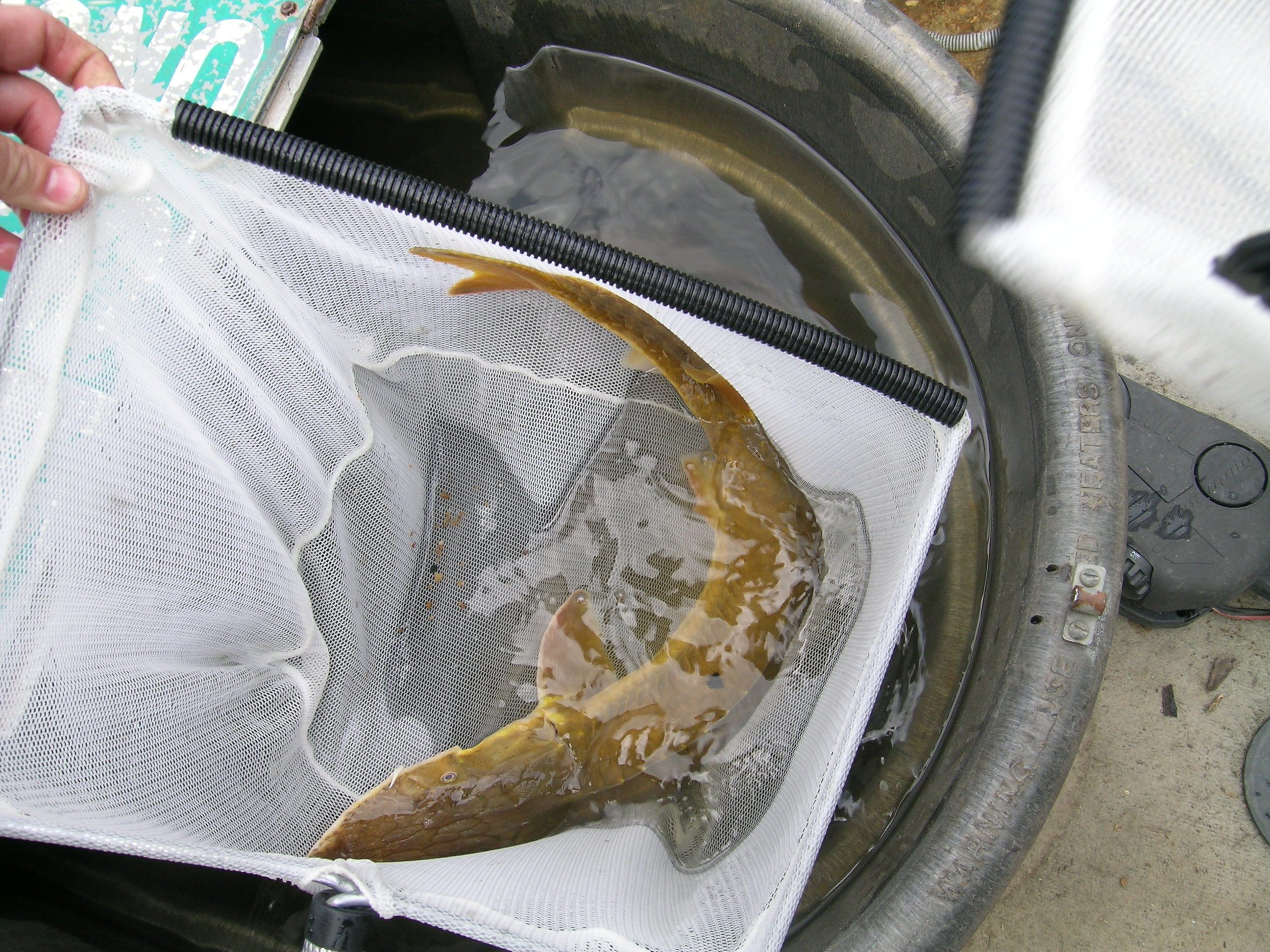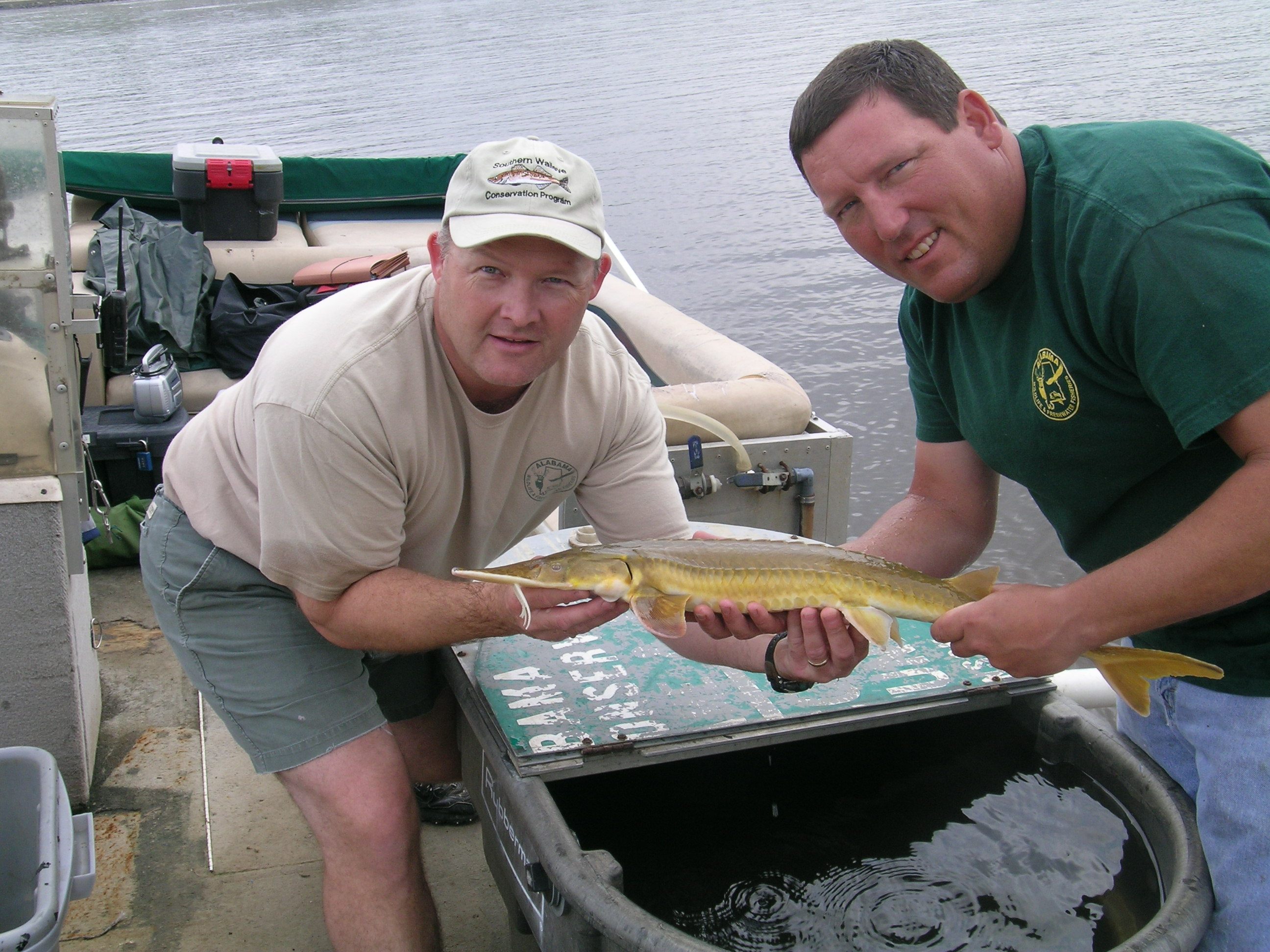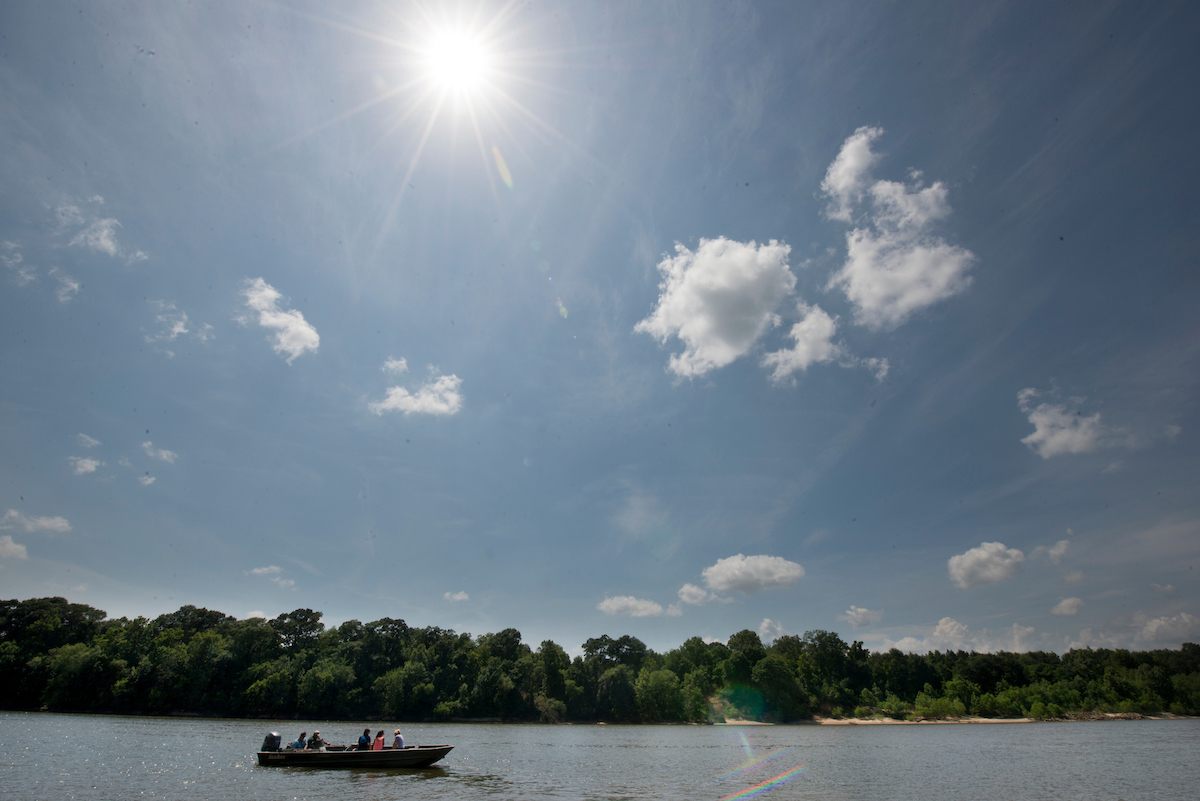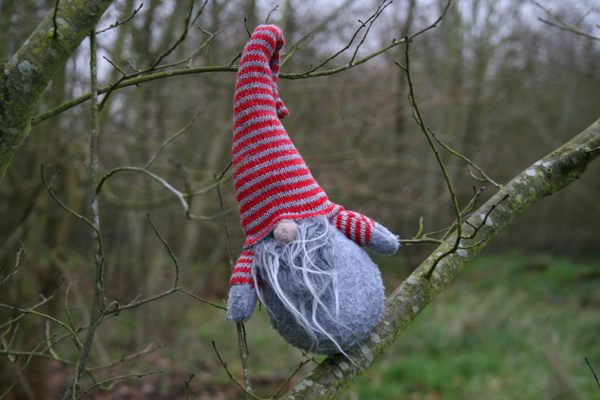How Fish Forensics Uncovered the Long-Lost Alabama Sturgeon
Scientists discovered that this rare fish is still alive—without ever laying eyes on it.

2007’s Alabama sturgeon, the last one ever caught. (Photo: Courtesy Steve Rider)
Biologist Steve Rider has spent 15 years searching for the long-lost Alabama sturgeon. He’s draped gill nets up and down the Alabama River. He’s scoured historical records for promising sites, and waited for hours dangling worms. The only time he caught one—the second-largest ever seen, in 2007—he tagged the big guy with an acoustic transmitter, hoping to be led to his fellows. But no friends ever surfaced.
This past spring, the fish finally showed up again but not as a splash in the river, or a tug on a line. The sturgeon appeared in the form of a small, glowing band on a blob of gel, in a lab at the University of West Florida. Rider was elated, as was Dr. Alexis Jasonik, a molecular ecologist and the head of the lab.
They had proven a fish’s existence without even laying eyes on it.
Their trick was environmental DNA, or eDNA, left by the fish as it swims through the river. Like all animals, fish shed constantly, leaving a trail of mucous membranes, urine, feces, and bits of scale. Because the DNA in this matter degrades quickly, if you find any of it in water samples, you know whatever left was recently lurking nearby. “It’s sort of forensics,” says Janosik. “It gives you the utility to look for things that are hard to find, invasive, or endangered.”

Alexis Janosik samples the Alabama for sturgeon. (Photo: Michael Spooneybarger/University of West Florida CREO)
A hundred years ago, you could barely ride a boat through the Yellowhammer State without running into an Alabama sturgeon or two. According to taxonomist Christopher Sharpf, the long, skinny, snub-nosed fish once had the run of the Alabama, Cahaba, and Tombigbee rivers, which criss-cross a combined 700 miles across the state. There were so many, scientists at the time thought they were just baby gulf sturgeons. In 1898, a Congressional report says, commercial fishermen sold about 19,000 of them—enough for everyone in Mobile to take home a nice fillet.
But as humans found new uses for the river, trouble found the sturgeon. In an ideal world, breeding fish swim up to the river’s headwaters to spawn, which allows their larvae to drift slowly downstream again as they mature. As more and more dams popped up along the river, both adults and young found themselves trapped in pockets of water, unable to get to one other or to grow up. Dredges and mining exacerbated the problem, and hungry anglers picked the survivors off for caviar. Their population plummeted.

Rider (left) shows off his specimen in 2007. (Photo: Courtesy Steve Rider)
By the time scientists began looking for the sturgeon in earnest, it was almost gone. “In the late 1990s, the Fish and Wildlife service had a large contingency of people together to search for sturgeon,” recalls Rider, who signed on in 2001. “In that time frame they caught five.” Later years proved even tougher, a fact perhaps best expressed by one of Rider’s papers, written in early 2007: “The DWFF expended 1806 man-days from March 1997 through May 2005, in efforts to collect the Alabama sturgeon,” the paper reads. More numbers spool out below, like a sad Mastercard commercial: Trotlines—2661. Hooks—166,350. Total fish captured—13,739. Alabama sturgeons—zero.
Then, in 2007, they finally hooked one. “We were hoping it’d be a female,” says Rider, as they had some sturgeon sperm stowed away from one of the earlier catches, and were thinking of starting a captive breeding program, “but unfortunately, he was a reproductively inactive male.” They stuck a transmitter in the fish, hoping it would at least lead them to more sturgeons, but no dice. By 2010, the U.S. Fish and Wildlife Service was calling the Alabama sturgeon “one of the rarest freshwater fishes on the planet.” In 2013, the last captive Alabama sturgeon, Bubba, perished in a hatchery tank in Marion.

Jasonik and Rider, sweeping the Alabama for sturgeon evidence. (Photo: Michael Spooneybarger/University of West Florida CREO)
Meanwhile, people were starting to breathe down the fish’s neck, so to speak. The government declared the Alabama sturgeon an endangered species in 2000, devoting a certain amount of federal resources to its protection, but the process took years. Conservationists, who felt helping the fish would benefit the whole river, were pitted against corporate bosses and mill workers, who feared the shuttering of the dams. It took what Sharpf describes as a team of “pro-sturgeon lawyers,” wielding lawsuits and Freedom of Information Act requests, to finally get it listed.
“It’s been a political hot potato,” says Rider. “Either you were for it or against it.”
Dogging the whole issue has been the persistent question of whether or not the fish actually still exists. So in the early 2010s, when scientists in other parts of the country began using eDNA to search for green sturgeon and Chinook salmon, a buzzer went off. “We just said, ‘Hey, we could use this for sturgeon!’” says Janosik.

Janosik Lab postdoc Justine Whitaker extracts sturgeon DNA from river water. (Photo: Michael Spooneybarger/University of West Florida CREO)
Janosik, Rider, and their teammates gathered samples from different parts of the river system in winter 2014 and summer 2015. “It’s like if someone committed a crime and you’re sweeping the room,” says Janosik. “You take it in several places and you get a good idea of what’s going on.” Then it was back to the lab to see what came up. Biologists separate DNA through a process called gel electrophoresis; if a specie’s traces are there, they show up as a thin band in a particular spot on the gel. “For a long time, we were getting no bands, no bands, and we thought, ‘Well, they’re just not here anymore,’” says Janosik. “And then a positive pops up and it’s incredible.”
To be certain, though, that the animal is still around, after Janosik and Rider found bands in 17 percent of their samples, they then sequenced to make absolutely sure they were looking at Alabama sturgeon.
“I’m excited that it’s still there,” says Rider. “I’ve always had a glimmer of hope that we can still save the species, and this sort of affirms it.” But the real search, the one that counts, has just begun. In order to help this long-lost species, scientists need to learn more about it and how it lives, and potentially set up a breeding program, both of which involve actually getting their hands on one. This means Rider has to truck his nets and lines back out to the river. He’s still looking for a needle in a haystack—but the haystack is smaller, and at least he knows the needle is there.
“It’s all about how we look for things,” says Janosik. “And if we’re not looking in the right way, we might miss it.”









Follow us on Twitter to get the latest on the world's hidden wonders.
Like us on Facebook to get the latest on the world's hidden wonders.
Follow us on Twitter Like us on Facebook